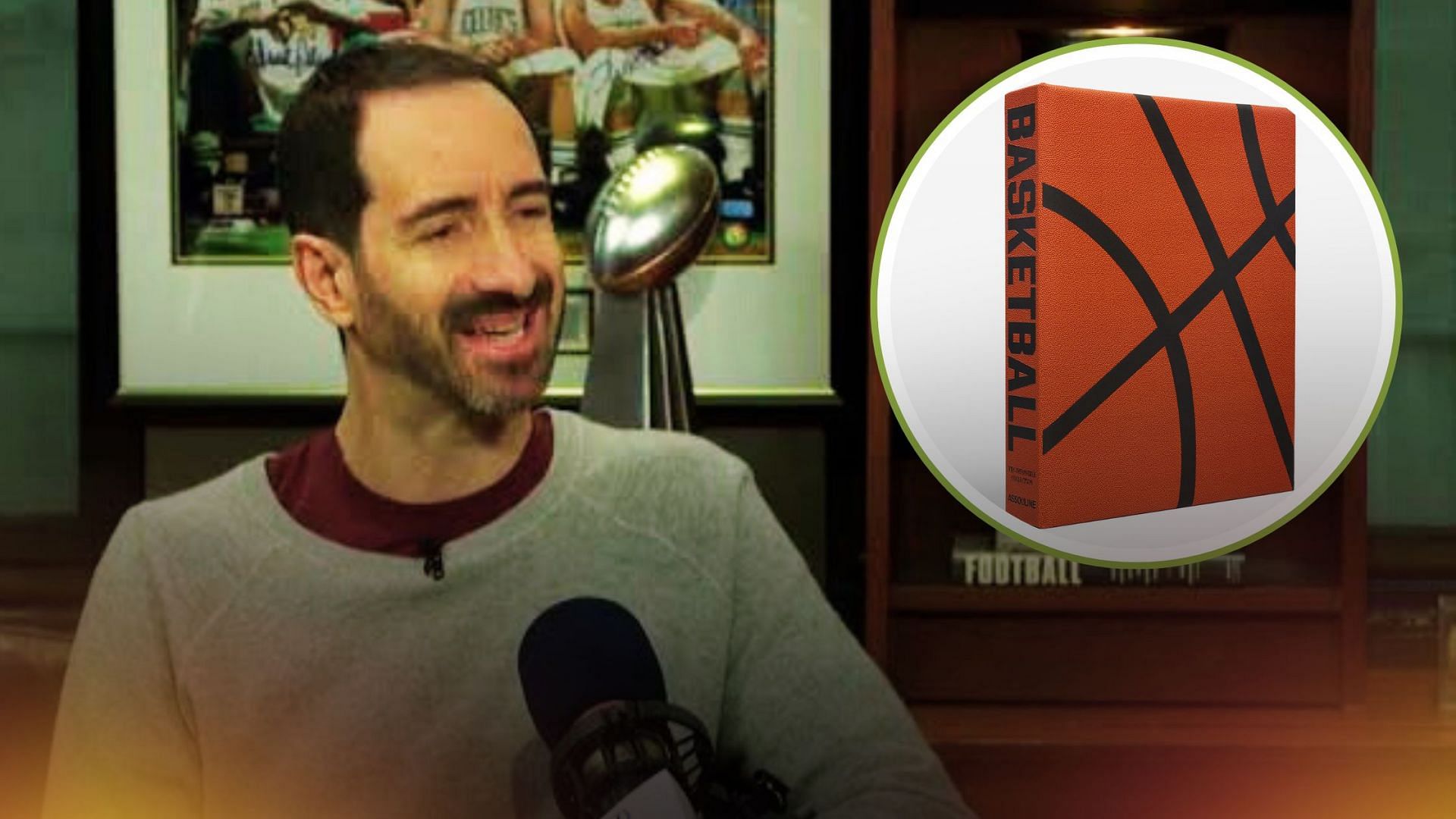
"The most consequential photo in NBA history.": Howard Beck on Wilt Chamberlain's iconic picture and new Assouline photo book
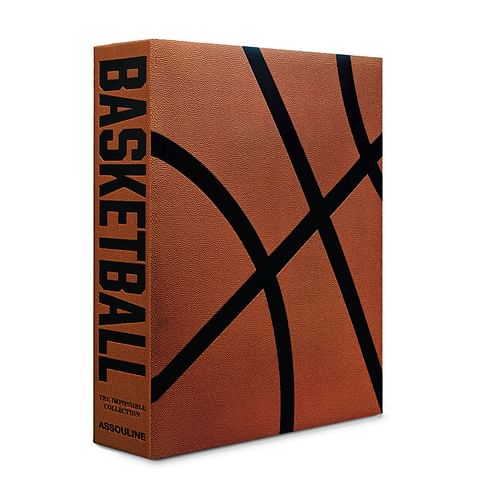
The photos seem worth more than a thousand words.
Basketball: The Impossible Collection, published by Assouline, features award-winning photos that capture the 100 most significant moments in NBA history for various reasons. Some feature game-winning shots. Some showcase the NBA’s superstars. Some highlight the league’s most memorable matchups.
Howard Beck, an NBA senior staff writer for The Ringer, also penned an essay for the book that gives in-depth context on the league’s rich history, its generational stars and the memories they have created.
Beck spoke to Sportskeeda about the book (order here), some of the book’s various photos and some memorable stories behind those images. Beck covered the Los Angeles Lakers for the LA Daily News (1997-2004), the New York Knicks/NBA for The New York Times (2004-2013) as well as the NBA for Bleacher Report (2013-2020), Sports Illustrated (2020-2023) and The Ringer (2023-present).
Editor’s note: The following one-on-one conversation has been edited and condensed.
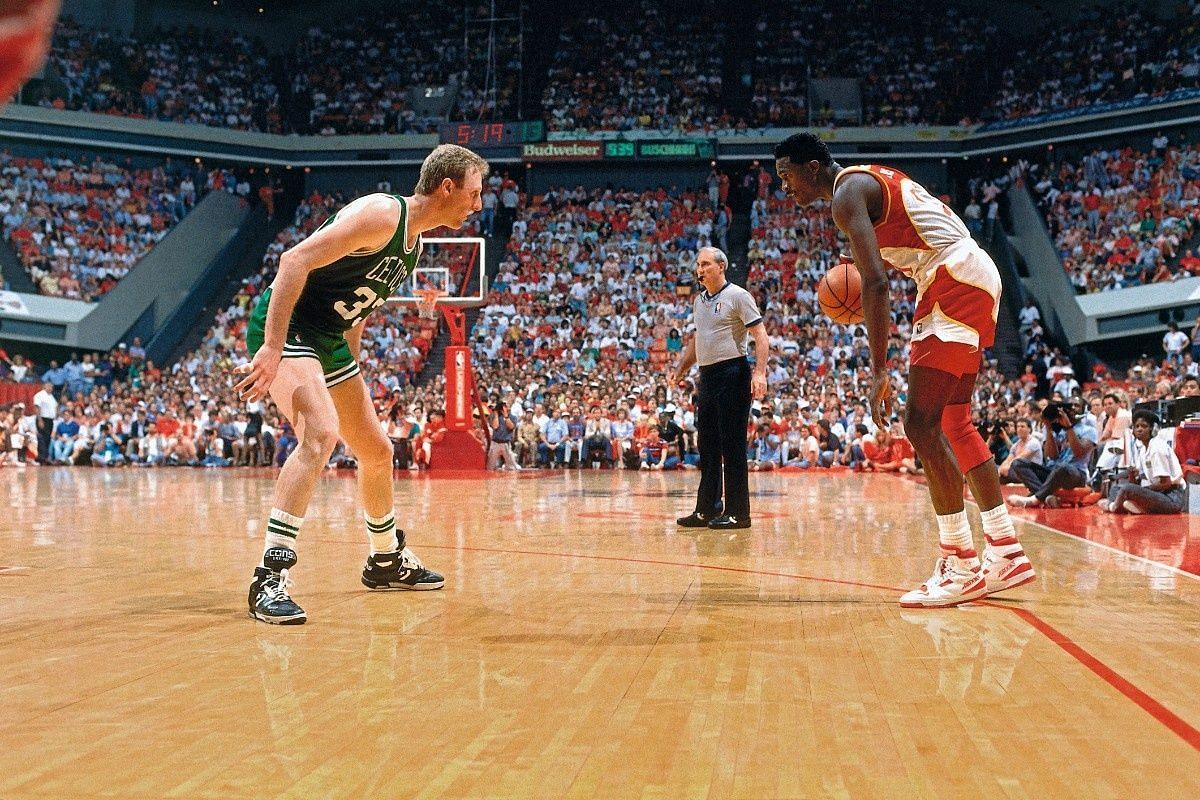
How did you get involved with this project?
Beck: “They reached out to me over a year ago. I was really intrigued about the entire concept right off the bat. It sounded like fun. The funny thing is I’m not a big ‘list’ guy in sports coverage. I don’t do a lot of rankings or try to compare players across the decades or teams across the decades. I’m always fascinated to read other people’s accounts on how you would rank the top 10 or 20 players of all time and the top teams of all time. I enjoy those conversations, but I generally don’t start them myself. I’m not one that does a lot of rankings. It’s not really my thing. So when someone tells me we have this project based around the idea on top 100 NBA moments, I was intrigued even though I’m not usually a big list guy.
But I liked that this was more open-ended and that I could determine what those 100 moments consisted of. It didn’t have to be the 100 most important moments or the greatest moments. There were no superlatives. It was more about wanting to make an incredible book and that people would love to have sitting on their coffee table, in their den or in their lobby and people will love to flip through it, read it and peruse through these incredible photos. It was more based on the impact of an image or, for the ones that I was alive for, a memory. I didn’t think of this as ‘100 most important moments, 100 greatest moments or 100 greatest photos.’ It’s 100 moments that broadly defined the NBA in the course of its history. I noted in the opening essay that it’s not comprehensive and there are going to be some things left out. There are some players that didn’t make the cut. But I tried to think of it as, ‘If you’re trying to tell the story of the NBA from the 1940s to the present, what are the things that you just can’t leave out?’ But with it being 100, of course, there would be things that wouldn’t make the cut.”

You wrote that the most consequential photograph was of Wilt Chamberlain holding the piece of paper after his 100-point game because of the achievement and because there was no video and very little coverage of itself. As a reporter who witnessed various epic NBA moments, how do you imagine the different things you would’ve wanted to be able to document about that moment?
Beck: “It’s a great question. It fits in that vein on if you could go back in time and attend this event, this game or this concert. With Wilt scoring 100, I think every sports fan on Earth would love to be able to time-travel for that one. It is such a mind-boggling athletic achievement. The only real evidence that we have is that photo. That’s why I led the essay with that photo and called it ‘the most consequential photo in NBA history.’ Most of us were not alive for Wilt Chamberlain’s 100-point game. Even if we were, it was not filmed and it was not recorded. There’s some vague audio of the fourth quarter somewhere. We can’t quite grasp it, appreciate it, understand it and process it in the way that we could appreciate, process and dissect Kobe [Bryant]’s 81, or LeBron [James] and Carmelo [Anthony] going for 60 or any other number of incredible achievements.
We are fortunate to live in a time where everything is on YouTube or at least accessible somewhere. If nothing else, there are at least detailed accounts that we can read. That’s not the case with this. It’s one of the most impressive things that anybody has ever done in sports and certainly in the NBA. So with this photo, I called it consequential in part of what he did and because of all that is missing and left out. It sparks the imagination. All you can do is look at that photo, stare and think about what was going through Wilt’s mind at that moment. How did he get to 100? What was that like to see? We can’t answer those questions. So it just lends itself to the imagination. To use that photo as my leaping-off point in the book, so much of sports fandom and what drives our passion as fans and observers of the game is seeing people stretch the limits of what we think is possible. It’s about giving us something that leaves us in awe, inspires and amazes us. That’s a lot of why we watch sports. That’s at the root of fandom. The world’s greatest athletes do things we can’t possibly conceive of doing. In this case, we can’t conceive it or see it, either (laughs). It speaks to the best aspects of the NBA with stardom and greatness. But this photo leaves us wanting more.”
Amid your stints as a Lakers beat writer and a national NBA writer, what was the most memorable NBA moment you covered?
Beck: “It’s really hard. I’ve got 27 years now as an NBA reporter, including the seven years that I covered for the Shaq and Kobe Lakers. I never have a good answer for this question because it’s hard to name just one. There have been dozens and dozens of incredible moments that I was fortunate to be at the arena for, including Ray Allen’s 3 in the [2013] Finals, Steph Curry’s break-out 3-pointer assault at Madison Square Garden [in 2013]. I was fortunate to be there for all of LeBron’s championships, all of Steph’s championships and all three of the Kobe-Shaq championships.
There’s a lot. But if I have to name one, I always come back to the Kobe-Shaq lob in Game 7 of the 2000 Western Conference Finals. The reason for that one? It’s early in my career. It’s my third season covering the Lakers. Just like with the Wilt photo, there is so much meaning in this single image or sequence with Kobe throwing the lob to Shaq. The context of that team and of that season is so much more complicated. The Lakers, with Shaq and Kobe up until that point, had kind of been a disappointment. They won 67 games in that season, but they had been flirting with disaster in every round of the playoffs. The Shaq and Kobe partnership was always fragile. And the Portland Trail Blazers were absolutely stacked. I believe that they were one of the greatest teams of all time not to make the Finals. They had two complete starting units – 10 players that were legit starters. The Lakers were down by 15 points in the fourth quarter of that game.
So the Kobe-Shaq lob was not the most important play with coming back by 15 points. But it was the dagger. It was the final blow. The Trail Blazers could’ve still won the game before that lob. But that lob dunk sealed it. It put the Blazers away. You see the expression on Shaq’s face after he throws down that dunk and then jumps into everybody’s arms. That’s when they knew they were going to the Finals. That then launches the dynasty. They won the championship that year and then won the next two.
You also couldn’t see it coming. Kobe looked like he was going to pull up in front of Scottie Pippen for a jump shot. When it left his hand, a lot of players on the court thought that Kobe was shooting and not seeing that Shaq was down there along the baseline for the dunk. The way Kobe pushed it up there also looked like a half-shot, half-pass. It was such an incredible and dramatic sequence. There’s so much meaning wrapped up in it.”
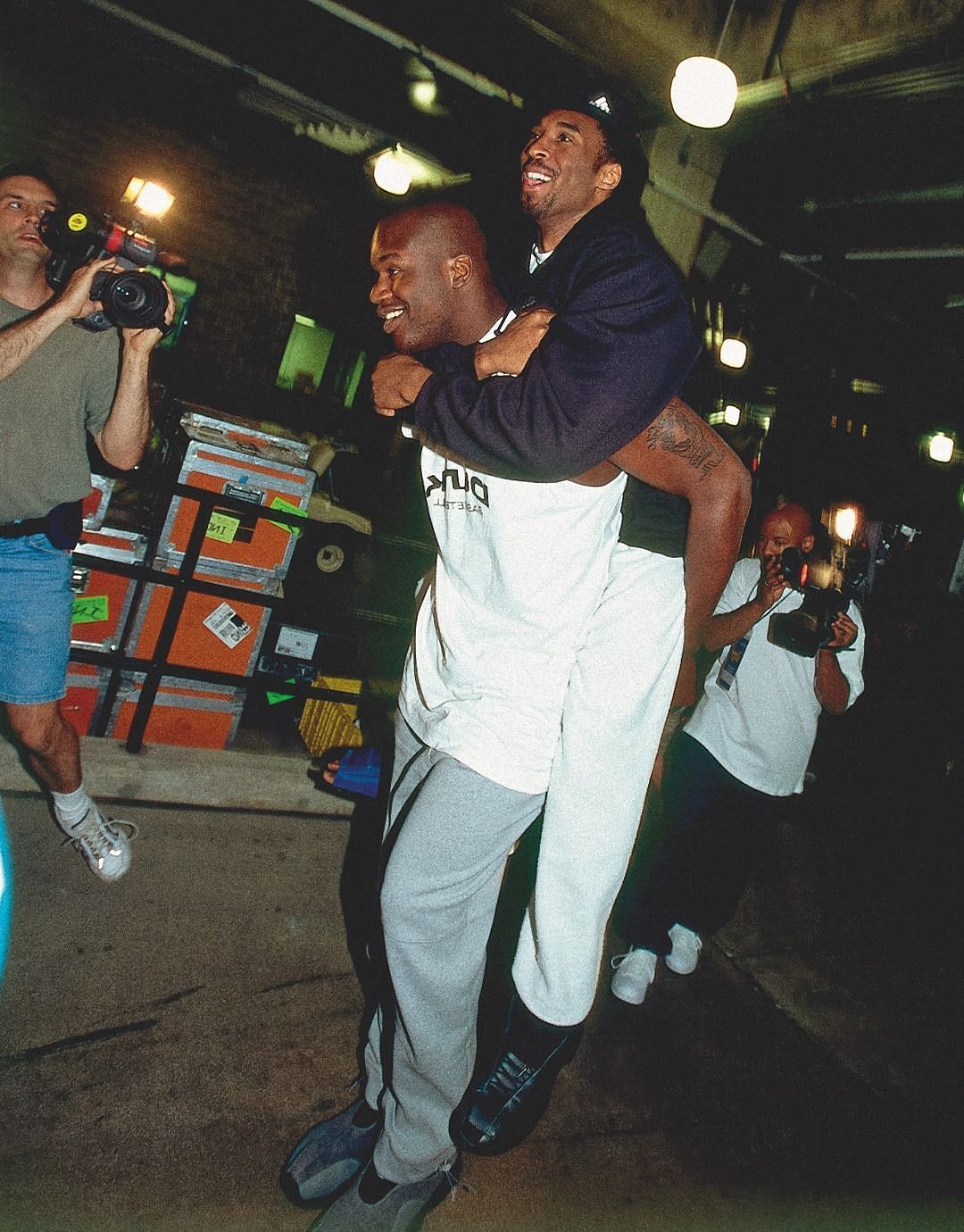
Speaking of Shaq-Kobe, one of the images in the book shows Kobe on Shaq’s back when he was dealing with his ankle injury in the 2000 Finals [vs Indiana]. What was it like to cover the sequence of events with Kobe having the ankle injury, missing Game 3, the uncertainty on if or when he’ll return and then his epic Game 4 performance?
Beck: “That Game 4 was another memorable one. Part of the reason is that the Finals were so consequential is also why the Kobe-Shaq lob was consequential. It’s a reminder of how fragile these things are. All we think about now is that there was a Shaq-and-Kobe dynasty and they won three in a row. The Lakers are the last team to win three in a row. But they were always so close with the title slipping away from them. They go to Game 7 in the Western Conference Finals in 2000. They go to Game 7 in the Western Conference Finals in 2002. They could’ve easily won one title instead of three. Even the first one that gets it started, Kobe turns his ankle so badly that he needs around-the-clock treatment. It wasn’t clear at what point he would be able to get back in the series, and how effective he might be if he comes back. He missed Game 3, and the Pacers were a really good team. They didn’t have the caliber of Shaq and Kobe. But they had Reggie Miller, Rik Smits, Jalen Rose and a whole cast. They were stronger at certain positions than the Lakers. An absent Kobe or diminished Kobe certainly opened the door to the possibility of the Pacers winning it.
Then here we are in Game 2. Shaq fouls out. Kobe missed Game 3. His status had been in doubt. Who knows what that ankle can handle? To this point, Kobe hasn’t had that moment where he validated all of the Michael Jordan hype. It’s hard for people to understand this now with the full totality of his career in the books. But up until Game 4 of the 2000 NBA Finals, Kobe was viewed as a really talented young kid who had some Jordan aspects to him. But he hadn’t really shown it in the biggest moments yet. That catalogue of clutch teams and clutch shots had not been assembled yet. Game 4 of the 2000 Finals was Kobe’s ‘I am the next Jordan’ moment. That’s the way it was viewed and written about at the time.
So the photo of Kobe riding on Shaq’s back, part of it is a reminder of how bad the ankle was. Shaq is carrying Kobe into the arena off the bus. Part of it is this is a rare light-hearted moment where the two of them are enjoying being teammates and being co-stars and partners as opposed to fighting with each other. It’s really poignant.”
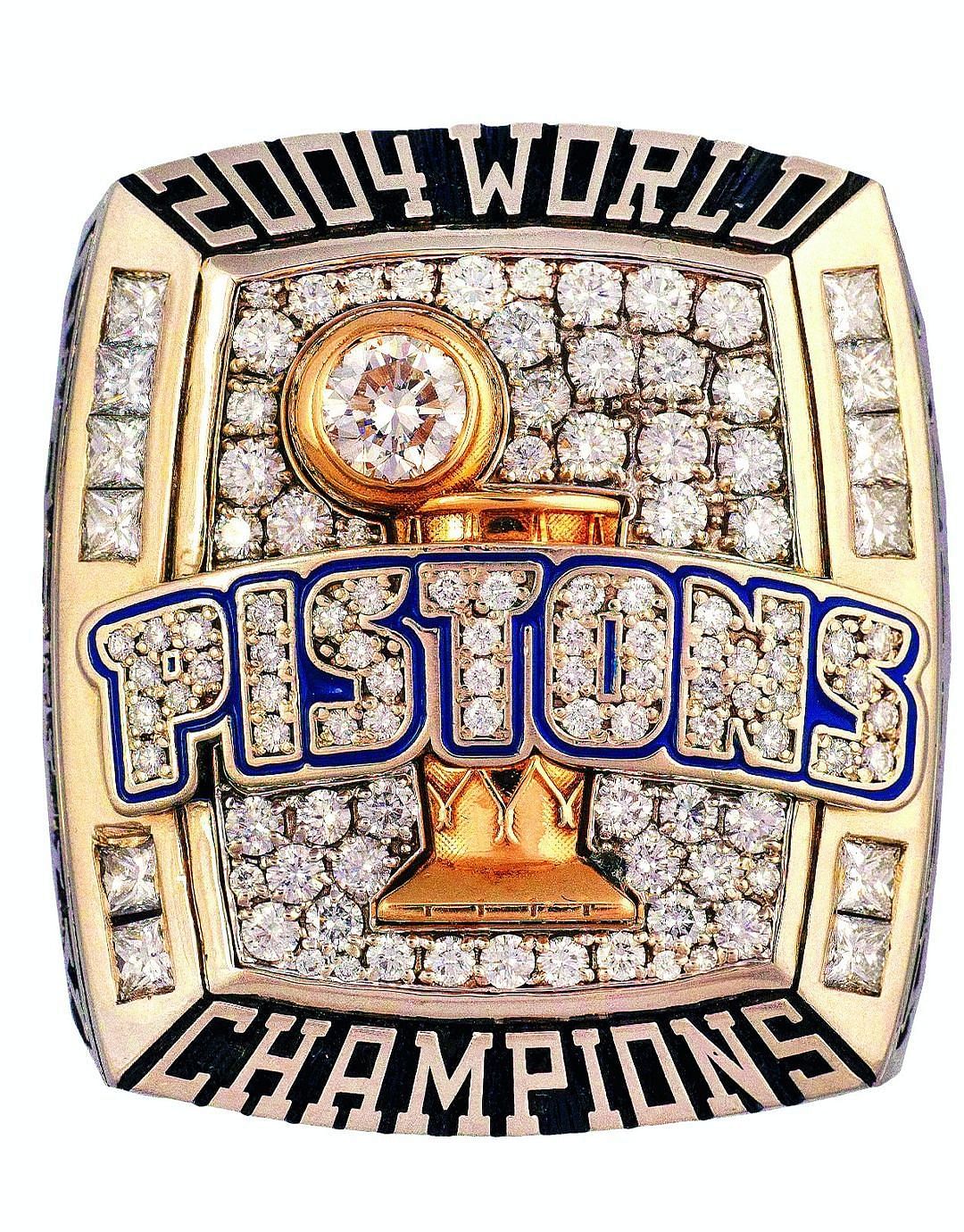
Another featured image is a closeup of the Detroit Pistons’ 2004 championship ring. What sticks with you covering that event, both with Detroit’s unexpected run and seeing the final time of the Kobe-Shaq Lakers?
Beck: “The 2004 Finals was such an interesting moment. Shaq, Kobe and the Lakers are the reigning dynasty. The Pistons are a team that no one saw coming and wasn’t built like any other championship team. They didn’t have anybody that was remotely close to the Lakers’ two stars. The entire theme of that series for the Pistons was almost like ‘The Three Musketeers: ‘ This all for one, and one for all’ mentality to take down this star-studded Lakers team. Just under the surface, the Lakers were incredibly vulnerable. Sure, they were in the Finals for the fourth time in five years. But Shaq and Kobe absolutely wanted nothing to do with each other by that point. They knew they were heading for a breakup, either by Kobe leaving as a free agent or Shaq being traded. We know how that went (the Lakers traded Shaq to Miami; Kobe eventually agreed to a new long-term deal with the Lakers). Phil Jackson had not been extended, so it’s almost a certainty he was walking away.
The finality was hanging over them the whole time. So the foundation of that dynasty was fading before our very eyes before they had even gotten to the Finals. The Pistons were tough as hell and unified as hell. That matters a lot in the NBA. Sometimes having a unified sense of purpose can trump talent. So I do think that series was much as about the Lakers losing it as it was about the Pistons winning it. That’s not a knock on the Pistons. What they did was absolutely incredible. But it was certainly a case where the Lakers should have won – if Karl Malone was healthy, if Gary Payton wasn’t sour on the triangle offense, if the Lakers were healthy overall since they were banged up. But at the core of it, Shaq and Kobe absolutely wanted nothing to do with each other anymore. It undermined everything.
What I remember about that night at the championship, there was this very solemn locker room. Karl Malone, who had just played the last game of his career, was in tears. After an incredibly successful career, he was that close to finally winning a championship after losing back-to-back years to Michael Jordan and the Bulls in the Finals (1997 & 1998) and after leaving Utah as the only other place he had played. He joined the Lakers in what was considered a ‘Super Team’ with Shaq, Kobe and Gary Payton. Then it all just vanishes. It was a very emotional locker room, knowing that for Shaq and Kobe this was the last chance they were going to get to win a championship as teammates. For Karl Malone, it was his last chance, period. For Gary Payton, it looked like his last chance, though he ended up getting one in Miami [in 2006]. For core members of the Lakers of that era – Derek Fisher, Rick Fox, Horace Grant – this was probably going to be the end for that group. It certainly was.
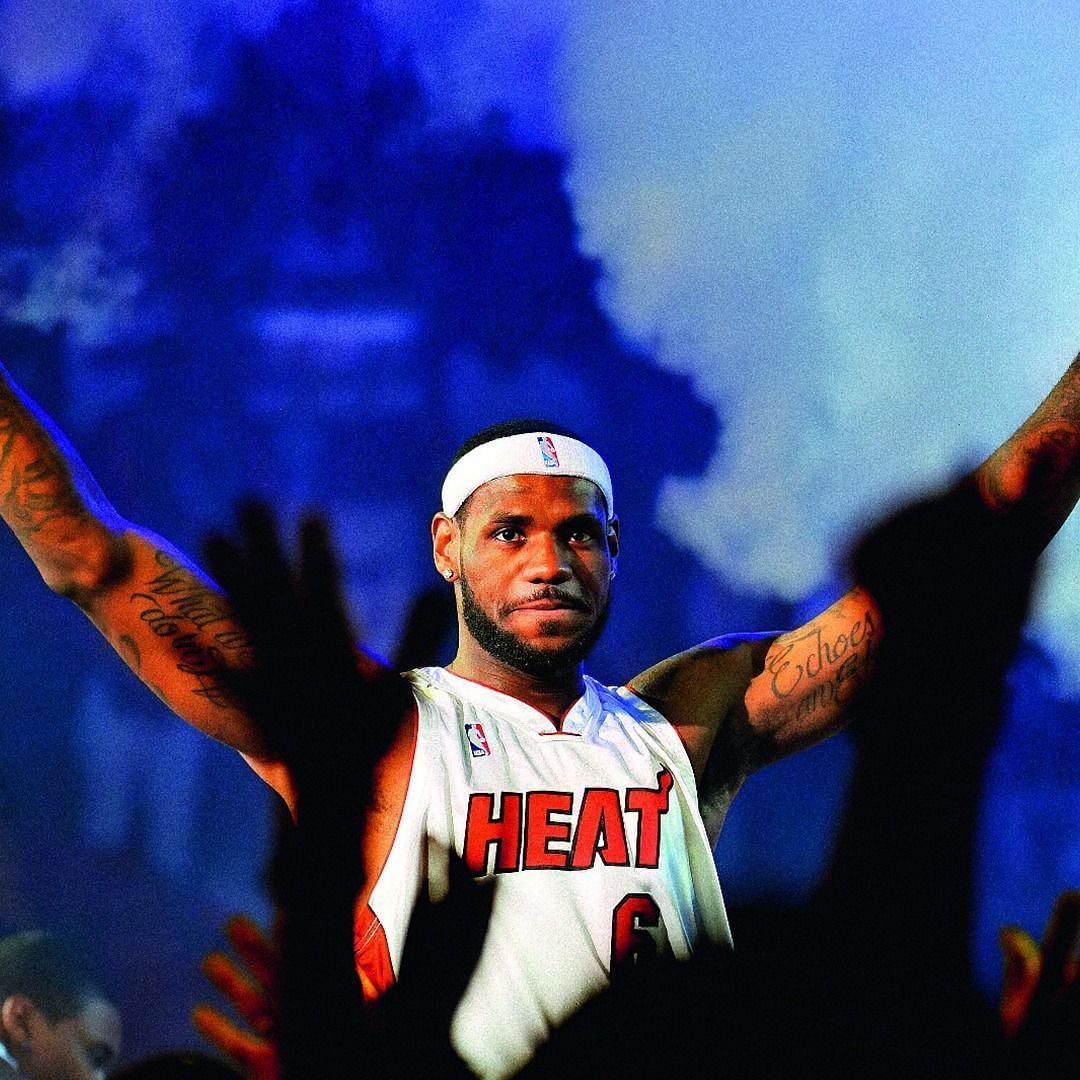
Six years later, LeBron joined Miami while you were then a national reporter. What’s your favorite memory of that time with ‘The Decision’, the scrutiny afterward, losing in the 2011 Finals and then winning in the 2012 Finals?
Beck: “The most fascinating part of that four-year run was that LeBron, despite being one of the greatest players that we’ve ever seen, was going to be viewed with skepticism until he got the championship. There was a large segment of the basketball-watching population that was not sold on LeBron until he won. Then he wins back-to-back [titles]. First, part of it was LeBron certifying himself as an all-time great because in this league, right or wrong, guys are ultimately judged by rings. And his decision to leave Cleveland for Miami was vindicated by going to four straight Finals and winning two championships.
I also think people started to understand LeBron differently. There’s the way he was viewed in Cleveland, which was, ‘He passes when he should shoot; he’s not Michael [Jordan]; there’s something deficient in his game because he doesn’t just make every game-winning shot the way Michael did. It was this dumb, reductive and unfair comparison that not just LeBron was subject to, but a lot of stars. Then the backlash over ‘The Decision’ was so fierce, so off the rails and so toxic that you wondered if LeBron could claim the kind of status that he had earned with his play. In year one [in Miami], he’s viewed as an absolute villain. By year two when he wins the first championship there, things started to soften. The ring vindicates the decision he made.
Then he starts to become more expressive, too. I thought he was closed off during the Cleveland years. He didn’t give much of himself to the media. I thought he was more reflective in his Miami years. Part of that has been the age he was and the stage of his career and maybe winning a championship, there was a certain pressure release that allowed him to relax a little bit and be a little more open. I think in some ways, he became more personable during those years in addition to becoming a two-time champion.”
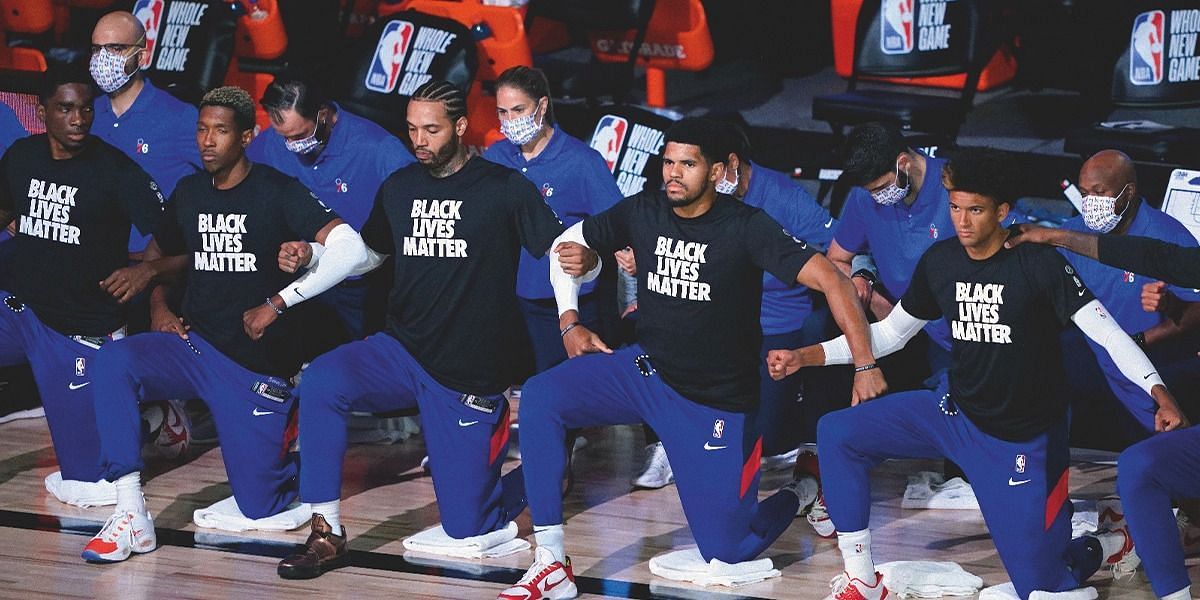
I thought you’d also have a good perspective on the players kneeling in the bubble to protest racial injustices. You also did a video essay for TNT on ‘Black Lives Matter’ and the players’ various social justice initiatives. What was the process for you with trying to hit all the right notes with being an ally and recognizing you haven’t had the same life experiences as a white person?
Beck: “Turner had created ‘The Arena.’ In the wake we all experienced in 2020 from the pandemic and ‘Black Lives Matter,’ there were and are extraordinarily stressful and difficult times. Turner wanted to create a show that touched on this space between sports, society and recognizing the NBA was right in the midst of all of this. A ton of NBA players had been out marching for ‘Black Lives Matter’ or engaging in their communities in any number of ways to try to bring attention and clarity to that moment. The producers asked me if I wanted to contribute to this. Your first thought as a journalist is, ‘You’re here to report and not to engage. This is for other people to take on the activism mantle.’ We’re observers primarily. That’s the job. So I wasn’t sure if it was the platform and that it was right for me as a journalist to move into this space at that time.
However, these were extraordinary times. There was a moment for me personally where I thought, ‘You can’t always be on the sideline.’ There are some things going on in our world right now and country right now that were too important to use the journalistic framework as a reason to be completely disengaged. I wouldn’t have felt good about myself if I didn’t try to use my own voice in some constructive way. So I became more political on Twitter during that time. I started using my Twitter platform and the audience that I had there more assertively on a number of issues, including COVID-19, Black Lives Matter and social justice.
So when Turner asked me if I wanted to contribute to the show, I decided that this was an opportunity that I should not pass up. As I said in the video, it was important to recognize that the players that I cover; the public are rooting for, cheering for and buying their jerseys, in a league where 75 to 80% of players are Black, if you are cheering for them as players, you need to cheer for them as people. You need to understand and listen whether they’re marching, kneeling during the anthem or writing opinion pieces, their life experience is different than yours and mine. So I thought it was an opportunity to express that sentiment and try to lend a thoughtful voice to this as someone who covered the league for a long time.
I had never done anything like that before. I hadn’t done a lot of audio essays or video essays. The only one I did for Turner was after Kobe died. I did a video essay about him. But as a writer covering the NBA and somebody who cares about the league, those were opportunities to expand my own repertoire a little bit and try something a little bit different. In the case of Kobe and ‘Black Lives Matter,’ these were historic moments for the league and for everybody who cares about it. I thought it was an opportunity to express myself in a different way.”
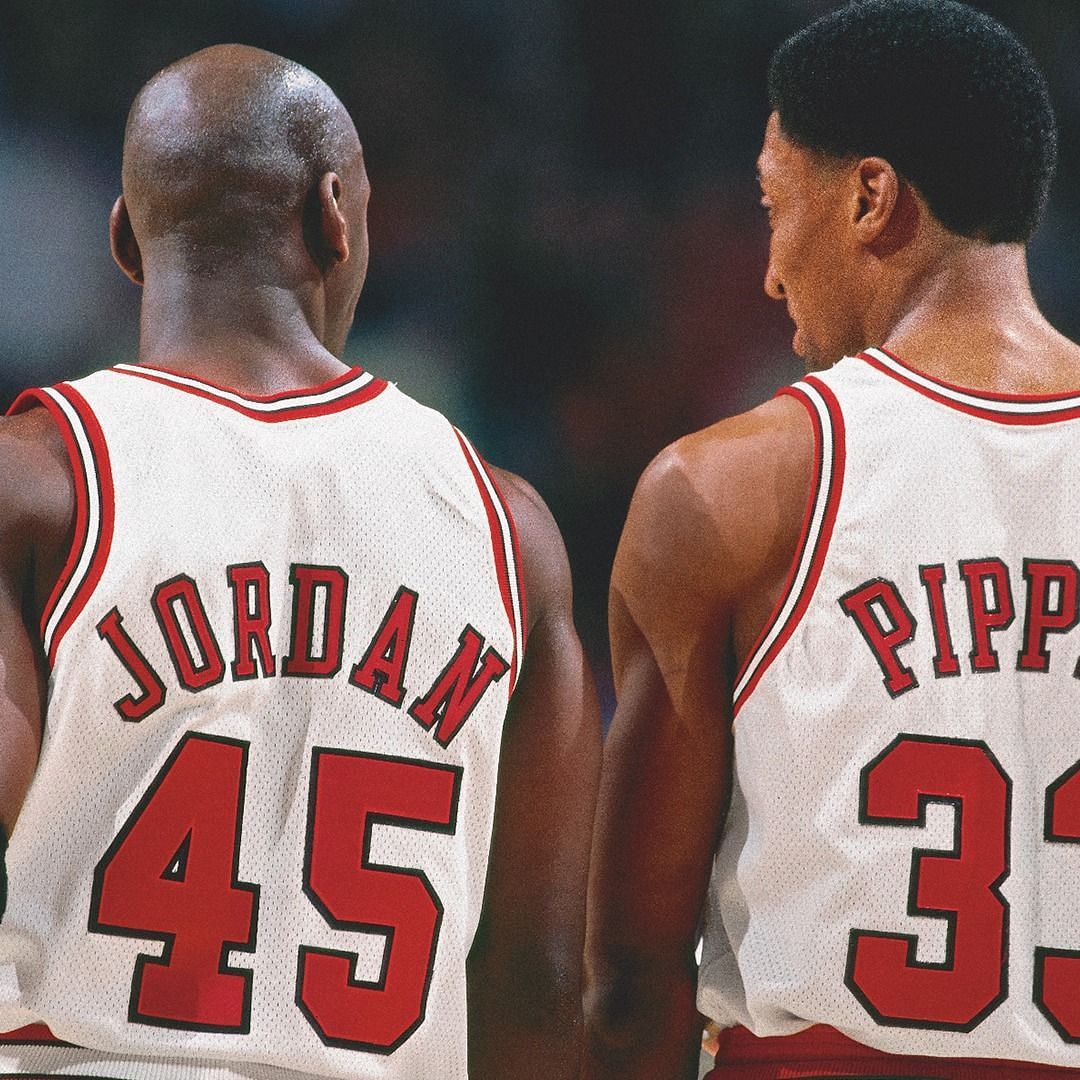
With this book featuring both historical and contemporary moments, what’s your expectation on how this will resonate both with long-time fans and new ones, regardless of age?
Beck: “I hope for people who have been watching the NBA a long time that they are flipping through this, smiling, nodding or turning to the person next to them and saying, ‘Have you seen this? Do you remember this? Let me tell you about this!’ They are all moments that, if you lived through them or witnessed them, really resonate. I hope for people who lived through these moments that it triggers some emotions and some memories. For everybody else who didn’t see all of this, I hope it’s at least an education or entry point. If you didn’t know much about Bob Cousy or ‘the Cleveland Summit,’ I would hope you’d know plenty about Bill Russell, but younger fans may see some photos and read the captions and sparks them to dive further in either to pick up a book or go to YouTube. There are more documentaries about Bill Russell than the actual footage, even if there is some Bill Russell footage. But I hope for younger fans that it’s something that sparks their curiosity and moves them to dive deeper.”
Mark Medina is an NBA insider for Sportskeeda. Follow him on X, Instagram, Facebook and Threads.